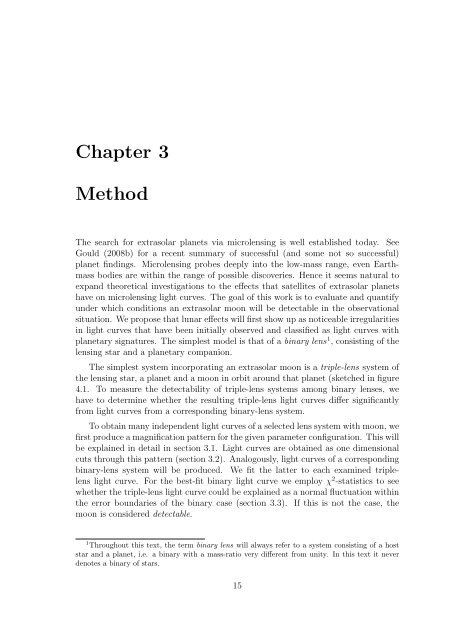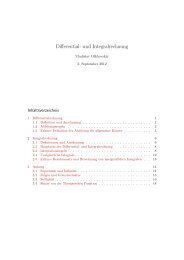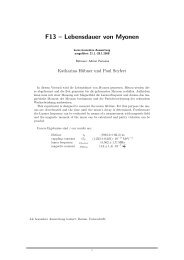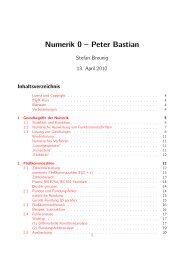Extrasolar Moons as Gravitational Microlenses Christine Liebig
Extrasolar Moons as Gravitational Microlenses Christine Liebig
Extrasolar Moons as Gravitational Microlenses Christine Liebig
Create successful ePaper yourself
Turn your PDF publications into a flip-book with our unique Google optimized e-Paper software.
Chapter 3<br />
Method<br />
The search for extr<strong>as</strong>olar planets via microlensing is well established today. See<br />
Gould (2008b) for a recent summary of successful (and some not so successful)<br />
planet findings. Microlensing probes deeply into the low-m<strong>as</strong>s range, even Earthm<strong>as</strong>s<br />
bodies are within the range of possible discoveries. Hence it seems natural to<br />
expand theoretical investigations to the effects that satellites of extr<strong>as</strong>olar planets<br />
have on microlensing light curves. The goal of this work is to evaluate and quantify<br />
under which conditions an extr<strong>as</strong>olar moon will be detectable in the observational<br />
situation. We propose that lunar effects will first show up <strong>as</strong> noticeable irregularities<br />
in light curves that have been initially observed and cl<strong>as</strong>sified <strong>as</strong> light curves with<br />
planetary signatures. The simplest model is that of a binary lens 1 , consisting of the<br />
lensing star and a planetary companion.<br />
The simplest system incorporating an extr<strong>as</strong>olar moon is a triple-lens system of<br />
the lensing star, a planet and a moon in orbit around that planet (sketched in figure<br />
4.1. To me<strong>as</strong>ure the detectability of triple-lens systems among binary lenses, we<br />
have to determine whether the resulting triple-lens light curves differ significantly<br />
from light curves from a corresponding binary-lens system.<br />
To obtain many independent light curves of a selected lens system with moon, we<br />
first produce a magnification pattern for the given parameter configuration. This will<br />
be explained in detail in section 3.1. Light curves are obtained <strong>as</strong> one dimensional<br />
cuts through this pattern (section 3.2). Analogously, light curves of a corresponding<br />
binary-lens system will be produced. We fit the latter to each examined triplelens<br />
light curve. For the best-fit binary light curve we employ χ 2 -statistics to see<br />
whether the triple-lens light curve could be explained <strong>as</strong> a normal fluctuation within<br />
the error boundaries of the binary c<strong>as</strong>e (section 3.3). If this is not the c<strong>as</strong>e, the<br />
moon is considered detectable.<br />
1 Throughout this text, the term binary lens will always refer to a system consisting of a host<br />
star and a planet, i.e. a binary with a m<strong>as</strong>s-ratio very different from unity. In this text it never<br />
denotes a binary of stars.<br />
15










